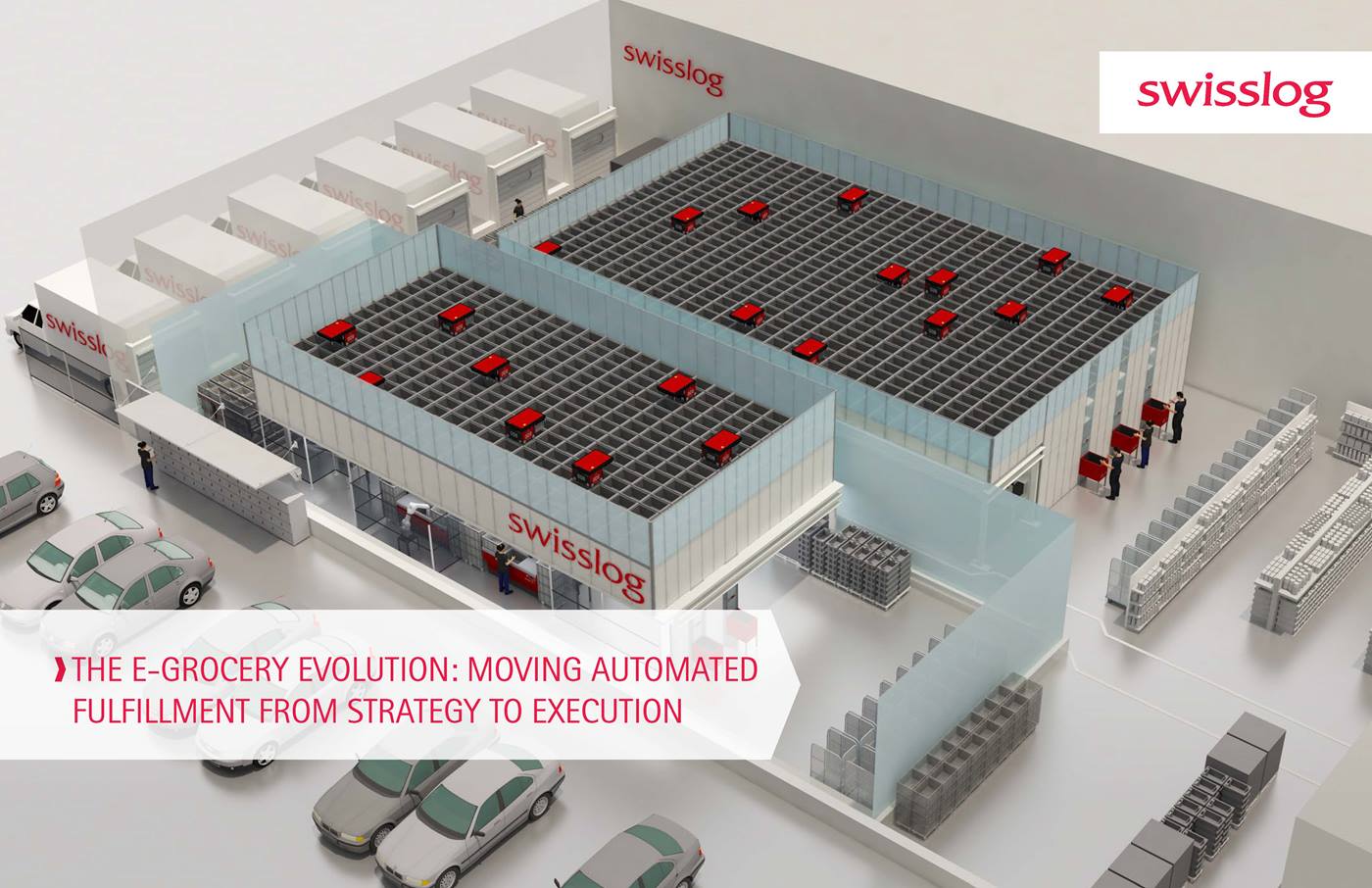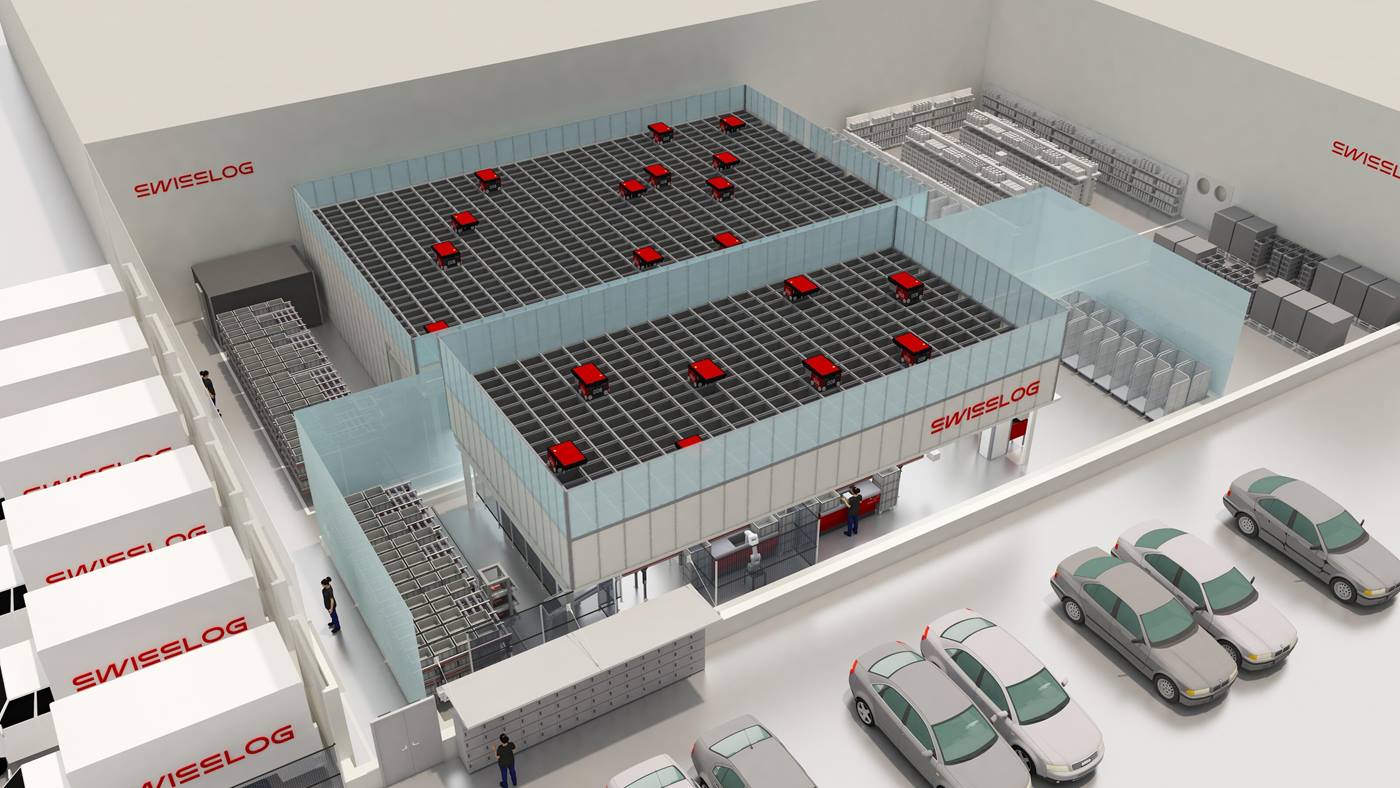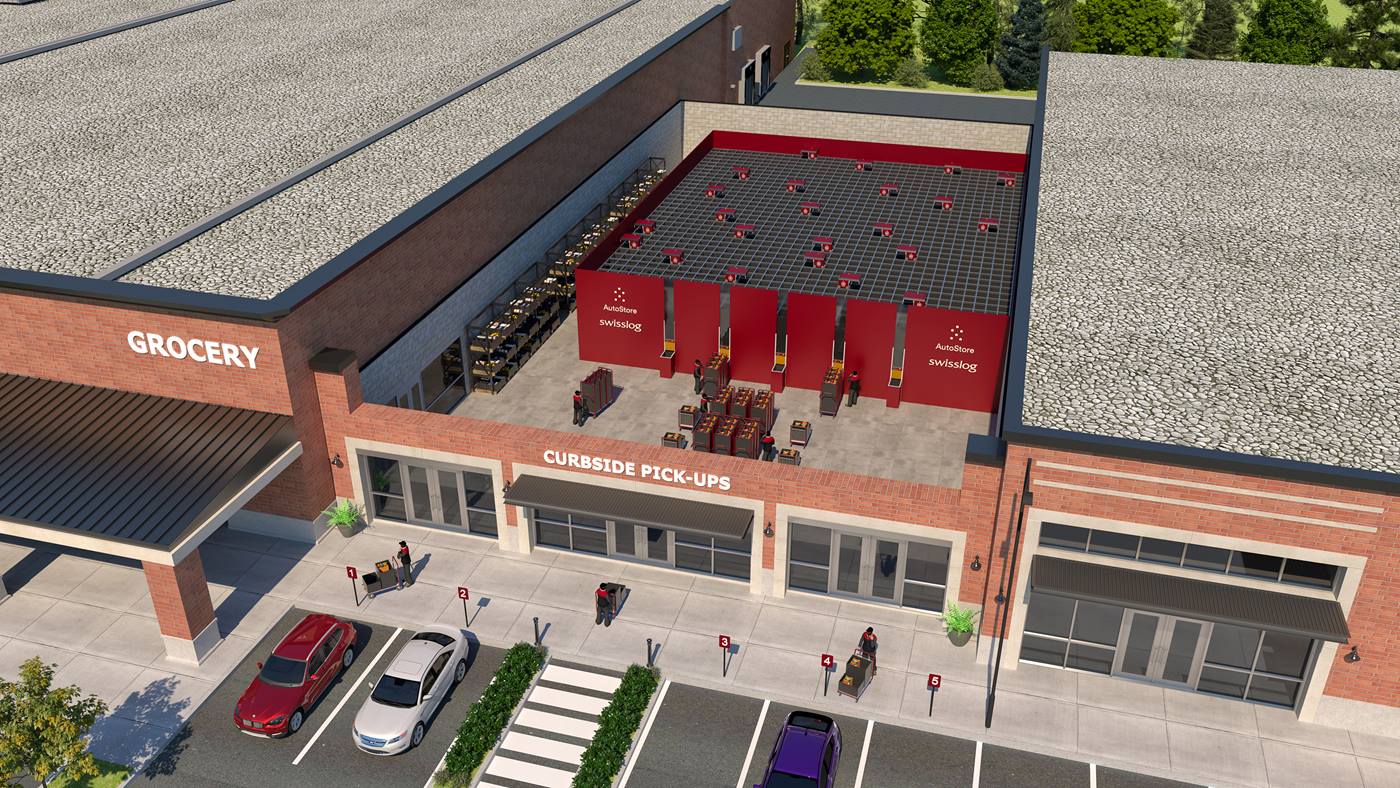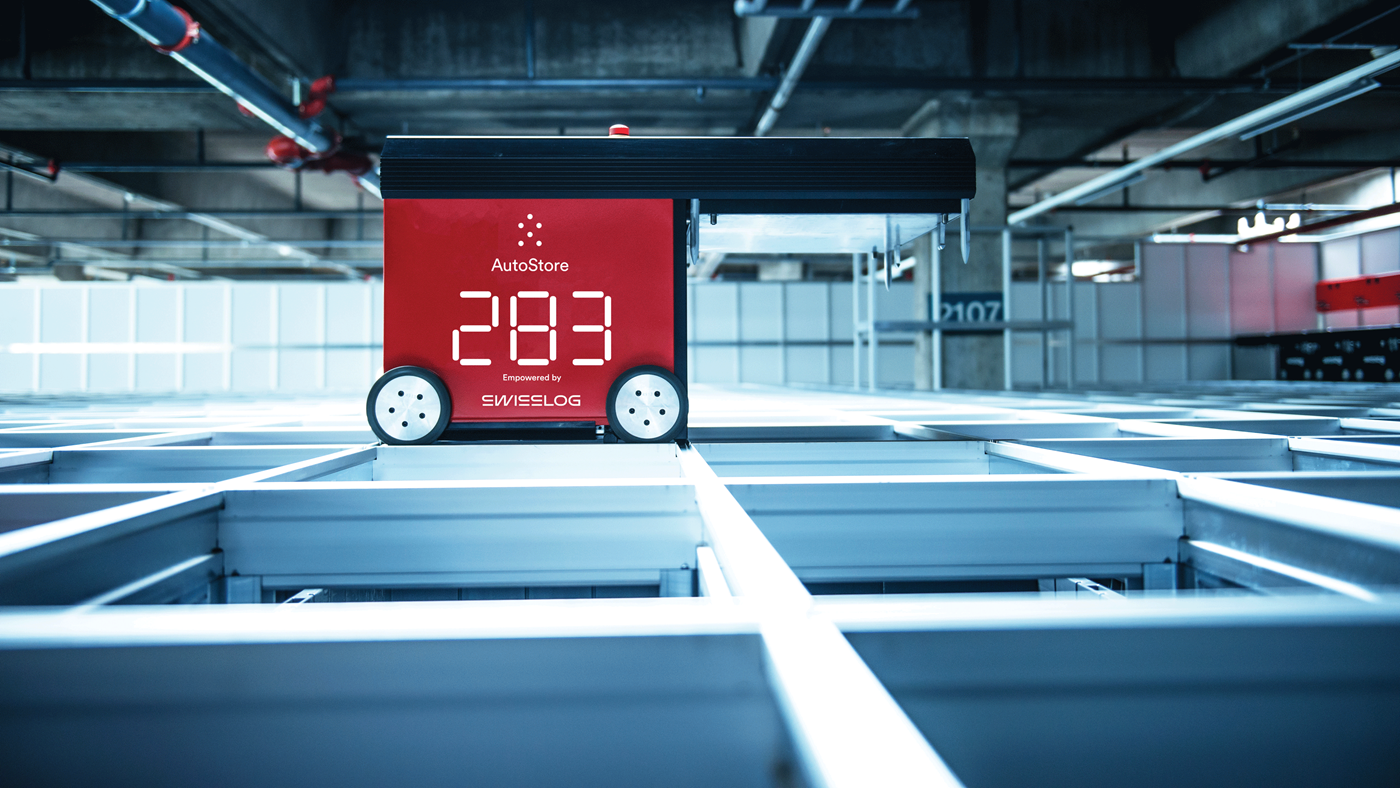Five Overlooked Challenges that Can Make or Break E-grocery Automation
Bob Hoffman
10 May 2022
Reading Time:
5 min.
Learn how to make a successful transition to e-grocery automation

Grocers have learned two important lessons about automating e-grocery fulfillment close to customers since the concept first attracted widespread attention in 2020.
The first is that automating e-grocery fulfillment is more complex than many expected. The challenge of squeezing automation into a small space to support local fulfillment was only the most obvious of the many that must be addressed in what is essentially a fundamental shift in how grocers serve their customers.
The processes for replenishing stores, stocking shelves and checking out customers in use today have evolved over decades. E-grocery automation is still early in its evolution and processes associated with balancing automated and manual picking, determining optimal inventory levels for different types of products and managing order staging and consolidation are new to every grocer making the leap to automated fulfillment. That makes the challenge of e-grocery automation a formidable one—and one that is as much about process engineering as it is about technology.
The other is that, for many, automation is becoming unavoidable. E-grocery orders have reached the level where the congestion created by in-store manual pickers is threatening to drive away valuable in-store shoppers—if grocers can even find the labor to support manual picking. Those who have chosen to outsource fulfillment are in an even worse position. They are dealing with the same congestion issues while creating a layer of separation between them and their e-grocery customers. Those shoppers are now as much customers of the third-party as they are of the grocer.
Those two lessons are leading grocers to move forward with e-grocery automation, but cautiously. They have seen evidence in the form of failed deployments that oversimplified standardized solutions are a poor match for the complexity inherent in e-grocery automation. Instead of rushing to deploy MFCs as quickly as possible, they are taking the time to develop a business case for automation and understand why some grocers have had success with MFCs and EFCs and others have not. If you are in that position, here are five often overlooked things you can do to increase the likelihood of making a successful transition to e-grocery automation:
- Know your starting point
Most grocers considering automation are already offering support for e-grocery orders through manual picking processes, but the path to automation will be different depending on whether they developed their own systems and processes to support manual picking from store shelves or have outsourced fulfillment to third parties.
Those that have invested in the technology to accept orders and pick from store shelves can leverage those investments to accelerate their adoption of automation. Virtually all MFC and EFC strategies rely to a degree on picking “long-tail” products—infrequently ordered or specialty items that don't make sense to stock in the fulfillment center—from the store. With systems in place for picking those products that are integrated with store inventory management, the challenge of implementing automation is somewhat simplified.
Those who don’t have those systems in place face a longer path to automation and may choose to assume responsibility for manual picking as an interim step to automation or work with their automation system provider to create a plan for extending the software that manages manual and automated picking in the MFC or EFC to the products that will be picked from the store. The path isn’t as direct but can be navigated with the support of an experienced partner with a software platform that can bridge manual and automated picking and integrate with existing software systems. - Adopt the right mindset
E-grocery is technically a form of e-commerce, but from an order fulfillment standpoint, an e-grocery fulfillment center operates very differently from an e-commerce warehouse. E-commerce warehouses function on batch fulfillment processes based on shipping schedules. In e-grocery, orders must be fulfilled continuously based on pickups and deliveries that occur throughout the day. You don’t open your checkout lines only at certain hours of the day and force customers to queue up during those times and the same is true for e-grocery fulfillment. You’re also managing fulfillment from ambient and chilled automation as well as manual picking of frozen foods, fast moving items and long-tail items, so a level of sophistication in order consolidation is required in e-grocery that isn’t present in e-commerce.
If you or your automation partner go into MFC or EFC automation with an e-commerce mindset, you’ll struggle to meet customer requirements. You have to focus on achieving sustained throughput across expected weekly order volumes, including strategies for managing the peaks and lulls that occur during that period. In addition, when planning to automate fulfillment grocers must let go of some of the retail concepts that enhance the value of in-store shoppers as they can be counterproductive to efficient grocery fulfilment. - Creating a structure that enables success
Because e-grocery represents a fundamental shift in how grocers handle products and serve customers, it typically requires organizational changes. That may mean adding director-level positions that bring new skills to the organization. However, the tactical level is where an implementation is most likely to fail, and will require fortification in many organizations in the form of personnel experienced in process design and the ability to optimize industrial processes. In our experience, the biggest obstacle grocers face today in moving forward with automation is the lack of an organizational structure that can execute an automation strategy and manage MFCs and EFCs for productivity and profitability. - Getting a grip on technology requirements
While e-commerce is still evolving, one of the signs of how far it has come is the fact that picking orders can now be considered the easy part of an MFC implementation. Not that optimizing picking is simple, but today we understand what technologies work best in MFCs and EFCs, how to maximize the density of those systems based on your order and inventory data and the available space, and how to manage inventory within those systems based on best by or expiry dates. But, while order picking is at the heart of an MFC or EFC operation, it must be supported by efficient replenishment processes and sophisticated order sequencing, consolidation and staging processes to achieve success with automated local fulfillment. The best practice is to take a holistic approach to fulfillment processes and pay special attention to the ability of the automation control software to support that holistic approach. - Preparing for optimization
At Swisslog, we have a track record for delivering MFC and EFC automation that meets or exceeds projected results within weeks of startup. Yet, every grocer we have worked with has been able to build on that initial success and improve performance through various optimization strategies. MFC automation isn’t something you put in place and forget about. It’s a process that benefits from close monitoring and continual refinement.

The E-Grocery Evolution: Moving Automation from Strategy to Execution.
Grocers are using MFC and EFC automation today to drive down fulfillment costs, strengthen brand loyalty, adapt to changing customer requirements and scale their e-grocery businesses. But the transition to automation must be done with care and an understanding of the issues that you’ll face. For more insights on e-grocery automation, read the Swisslog white paper, The E-grocery Evolution: Moving Automation from Strategy to Execution and subscribe to this blog as we will be expanding on the insights shared in this post in the coming months. To connect with one of our specialists, contact Swisslog.








